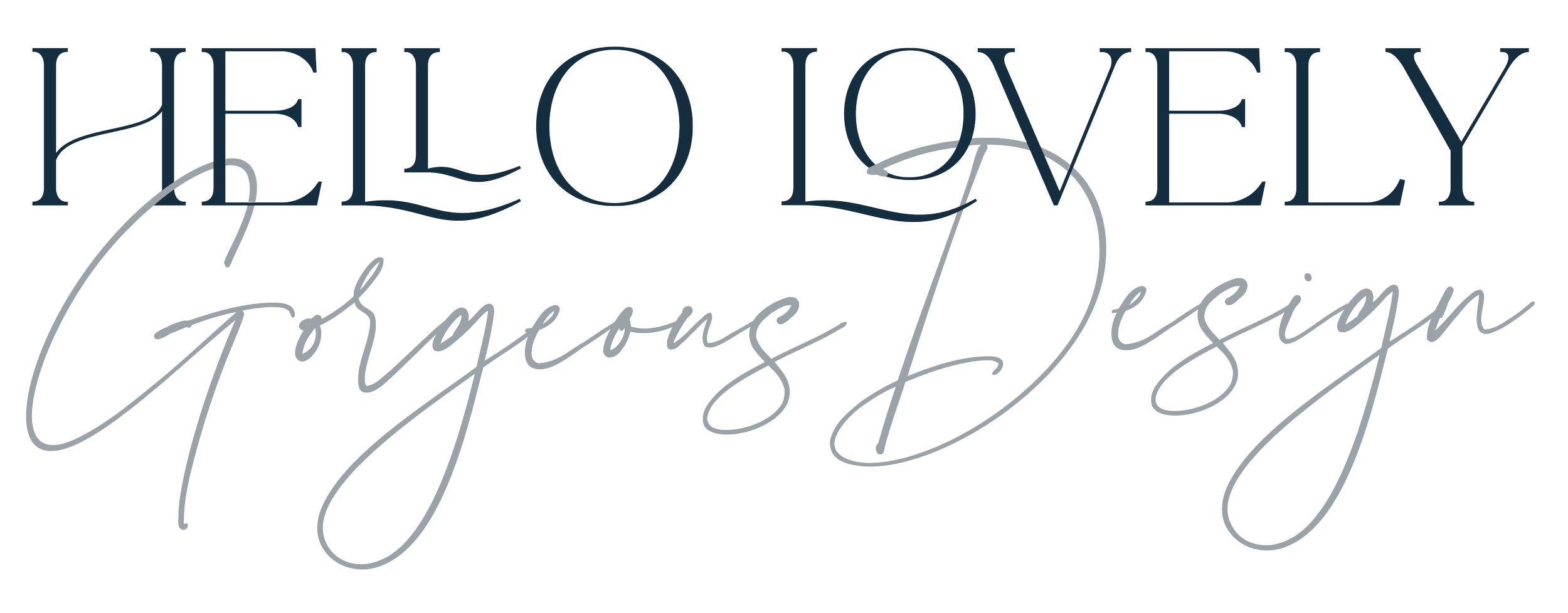Twelve top design skills which aren't creative!
I’ve managed designers, commissioned them and I work as one too. When I set up Hello Lovely, I drew on all those experiences. I thought about the systems I have used, the people I’ve worked with and my client experiences. What worked, what didn’t and can I do better?
Many Hello Lovely clients arrive with me through recommendation which is wonderful. Others because a designer has disappeared mid-job. I’m proud of my profession so it’s horrible to hear this and it clearly dents client confidence. I hope this list will help you to understand more about how I work and tools that can help to get organised.
People skills. It’s very important that clients and designers get along. We’re mere human beings so it’s unlikely to be plain sailing all the time, but overcoming hurdles in a mindful way and talking over solutions is a really important part of any project. I like to meet clients in person or on a Zoom chat, then we can both decide if we’re a good fit before we start.
Project management. I love working with Trello and Asana. I am happy to adapt to my client requirements too. If they have an internal system, like Smartsheets, that’s fine. It means I learn a new way of working and add extra value to the project such as wireframing (Adobe XD, Balsamiq) and agile working.
Communicate. Answer the phone, reply to the email even if it’s check-in with a date when you can reply in full. Give notice of holiday dates. Look at schedules or milestones and work out a solution. Don’t disappear and resurface when you post snowboarding pics on Insta. Freelancing does mean independence but with care and consideration!
Have a process. Getting a checklist together that means you, colleagues or subcontractors finish a job correctly. Missing the details makes everyone nervous.
Ability. I once attended a talk during my MA where a fledgling agency said they took in all work even if they didn’t know how to do it. I admired their balls but I prefer to tell you if it’s not in my skills set and put you in touch who can do it or advice on subcontracting options.
Finish the job. Web design and logo design have few barriers to low entry talent. This means that both suffer with half finished jobs. Designers must work to ability and should be open about skills. If you struggle with spelling for example, explain this so that your clients knows or look at improving this area. If you can sweep through WordPress with ease but haven’t a clue about typography, collaborate with a designer who has.
Learn on your own time. Design and tech are constantly evolving. I attend WordPress meet-ups, webinars on business training, wander around in art galleries, network at UX conventions and geek out at typography events. It means I’m constantly evolving.
Don’t type in your own text when it’s been supplied. Don’t do this. Styling the text with paragraph styles is a good thing.
Be mindful of queries. I like to check with my clients about handling queries. The brief should iron out most big questions but you may want to agree on how to address the niggles. If a proof correction isn’t clear, do you want one round-up email throughout or email the queries on handover?
Offer extra services if you have the skills. I’m a designer but along the way I’ve trained in picture research, UX design, subediting, project management and scheduling. I will mention this when I see that I can help to add more. That all said, be careful not to overextend (see point 5).
It’s not the designer’s highway or no way. A good brief (yes, that again!) and checking all the aims will give a clear design path. We designers are here to collaborate, inspire, encourage but never to impose our will unless it’s with good evidence or you’re an funeral parlour who wants to use Comic Sans in your branding.
Be a business. It’s very tempting to sit at a desk in a spare room and think small. Please do get insurance, find a great IT person for those emergencies and back up your work. Get a logo, build a brand and sort out the website. You know who to call don’t you?!
Takeaway
Great systems and checklists can save time and mistakes. It’s not always about the talent of a designer but their abilities and the processes employed.
Resources
Helen Lindop offers lots of advice on her blog. She can get you sorted on systems and workflows too.
Louise Lee, former PA to William Hague and Lord Coe, knows her stuff and shares heaps of information at Saunders and Lee.
You can find lots of expert advice on Drive The Network’s learning hub here including some posts from me on design topics.
One of the areas that has threatened to overwhelm me the most is social media. Lenka Koppova makes sense of this and her Cambridge Social Media Day 2019 is well worth the investment. Get some great tips from experts in the field. Book a ticket here.
Managing your Mac. I use Adobe Bridge to organise folders. I back on using an Apple Airport Capsule and online via Google. I do this via Time Machine and daily.
Insurance for designers. I like Dingy, Hiscox and Policy Bee. It’s always worth asking at network events too but don’t forget to actually buy it!
I have lots of other system such as online proofing that my book publishing clients use, accountancy software and time scheduling to record hours. I also like to know my Mac is good health as it’s my most used tool. Do drop me a line if you want to know more about these or chat on social media!
